Tomb of Tutankhamun: Unveiling Ancient Wonders in Egypt
Step back to the enchanting era of ancient Egypt, where the name Tutankhamun reigns supreme. Tutankhamun, also known as King Tut, was a young pharaoh who ruled during the 14th century BC. His significance in Egyptian history lies in his brief and somewhat mysterious reign and the remarkable discovery of his nearly intact Tomb of Tutankhamun in the Valley of the Kings. This young ruler ascended to power at a tender age and left an indelible mark on Egypt’s historical landscape, capturing the fascination of historians, archaeologists, and curious minds alike.
Imagine yourself standing on the threshold of a hidden world frozen in time for millennia.Tomb of Tutankhamun, nestled in the heart of the ancient cemetery, offers an irresistible allure to modern-day travelers seeking to unravel the secrets of Egypt’s past. It beckons with whispered tales of treasures, mysteries, and a glimpse into a civilization that thrived thousands of years ago.
The mere thought of stepping into the sacred chamber where the young pharaoh’s remains were interred, surrounded by meticulously crafted artifacts and priceless relics, evokes a sense of wonder and curiosity that transcends the boundaries of time. Join us on a captivating journey as we delve into the fascinating story of Tomb of Tutankhamun, where history and adventure intertwine in a mesmerizing dance, waiting to sweep you off your feet.
Explore our Best Egypt Nile Cruise Trips:
- Al Hambra Nile Cruise
- Blue Shadow Nile Cruise
- Alyssa Nile Cruise
- Crown Jewel Nile Cruise
- Paradise Nile Cruise
- MS Le Fayan Nile Cruise
Unearthing the Historical Significance of Tomb of Tutankhamun
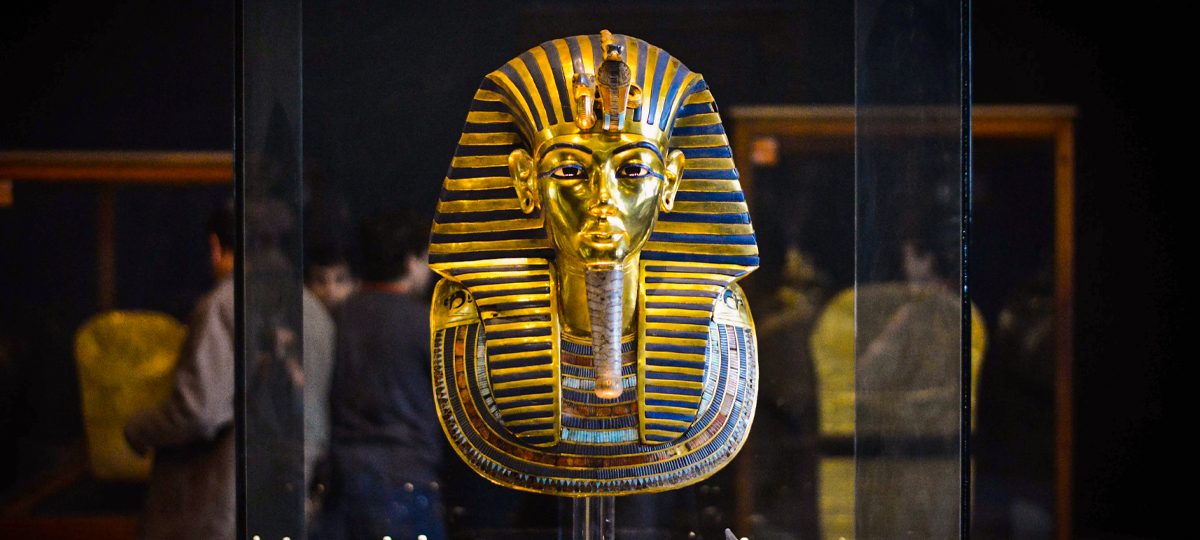
Tutankhamun’s Reign and His Contribution to Egyptian Civilization
Embark on a voyage into the past as we delve into the captivating legacy of the tomb of Tutankhamun, a young ruler whose reign left an indelible mark on ancient Egypt. Tutankhamun ascended to the throne at a tender age, ruling during the 14th century BC. Despite his brief time in power, his impact on Egyptian civilization cannot be underestimated. His reign witnessed a resurgence of traditional religious practices, restoration of artistic and architectural marvels, and strengthening of diplomatic ties with neighboring nations. In his all-too-brief rule, Tutankhamun infused new life into a flourishing empire.
Discovery Tomb of Tutankhamun by Howard Carter and Lord Carnarvon
The tomb of Tutankhamun is a tale of determination, patience, and awe-inspiring discovery. Enter Howard Carter, an English archaeologist, and his patron Lord Carnarvon, whose joint efforts bore fruit in 1922 when they unearthed the long-lost tomb in the Valley of the Kings. Imagine the anticipation, the heart-pounding moments as they peeled back layers of history, revealing an untouched treasure trove that had remained hidden for over 3,000 years. The meticulous excavation painstakingly revealed a dazzling array of artifacts, each offering a glimpse into the opulence and grandeur of ancient Egypt.
Don’t miss Reading A Quick Review of Nile Cruises in Egypt
Importance of The Tomb of Tutankhamun in Shedding Light on Ancient Egyptian Culture
The tomb of Tutankhamun is not merely a resting place for a young pharaoh; it is a portal to a bygone era, a window into the soul of ancient Egyptian culture. The meticulously preserved artifacts within the tomb provide invaluable insights into the daily life, beliefs, and aspirations of a civilization that thrived eons ago. From intricate jewelry to elaborate furniture, from ceremonial masks to chariots, each piece serves as a puzzle piece, allowing us to reconstruct the vibrant tapestry of a society steeped in mystique. The tomb’s significance reverberates beyond its physical confines, enriching our understanding of art, religion, and the intricate social fabric that defined ancient Egypt.
Don’t miss Reading Nile Cruise Itinerary
Navigating the Journey to Tomb of Tutankhamun
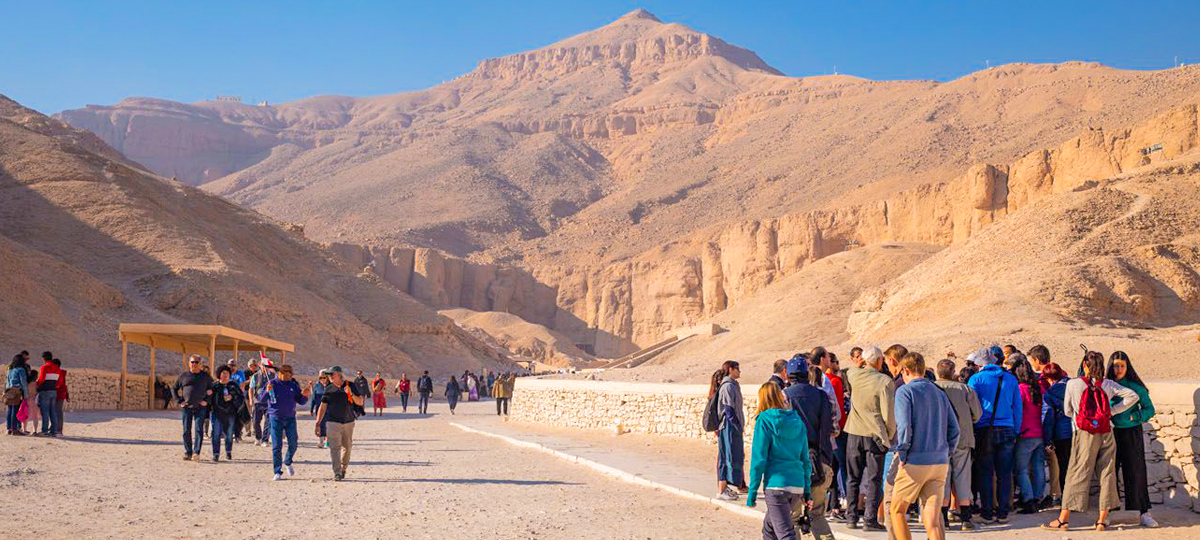
Choosing the Right Time to Visit Egypt
Embarking on a voyage to Tomb of Tutankhamun requires careful consideration of the right time to visit the enchanting land of Egypt. The climate plays a pivotal role in shaping your experience, and the ideal time is during the cooler months of October to April. This period offers a respite from the scorching heat of summer, allowing you to explore with comfort and ease. Remember that Egypt is a popular tourist destination, so planning your trip during shoulder seasons can help you avoid the peak crowds while enjoying pleasant weather.
Arriving in Luxor: Gateway to the Valley of the Kings
As you set foot in Luxor, a city steeped in ancient grandeur, you’ll be greeted by the awe-inspiring gateway to the Valley of the Kings. Luxor in Egypt is the perfect starting point for your journey into the heart of Egyptian history. Its vibrant markets, stunning temples, and proximity to the Valley of the Kings make it an ideal base for exploration. Allow yourself to be captivated by the rhythmic pulse of daily life in Luxor before embarking on the unforgettable excursion to Tomb of Tutankhamun.
Check Here For More Information about the Best Time for Nile Cruise
Understanding the Logistics and Permits Required for Tomb Exploration
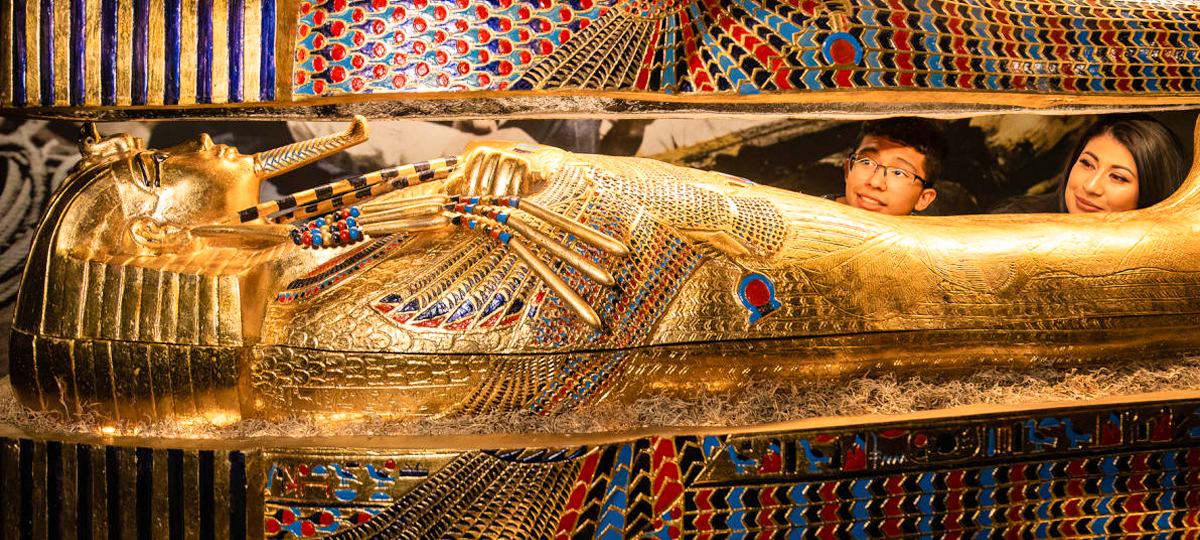
Before you embark on this transformative journey, you must acquaint yourself with the practical aspects of the Tomb of Tutankhamun exploration. Securing the necessary permits is paramount, and you can obtain them from the relevant authorities in Luxor. These permits grant you access to the Valley of the Kings, where the Tomb of Tutankhamun resides among its brethren. Guided tours are often recommended, as they provide valuable insights and ensure a smooth experience. Remember to dress comfortably, as you may be navigating uneven terrain. With the logistical details in place, you’re poised to step into the realm of the ancient pharaohs, where history comes to life in the most captivating and immersive way.
Don’t miss to Check Out Our Egypt Tours With Nile Cruise.
The Mystique of the Valley of the Kings
- Delving the History of the Valley of the Kings, Prepare to be transported to an era of pharaohs, dynasties, and unparalleled grandeur as we delve into the captivating history of the Valley of the Kings. This sacred necropolis, nestled on the west bank of the Nile River near Luxor, served as the final resting place for numerous Egyptian royals over centuries. The valley’s historical significance stems from its role as a burial ground for rulers seeking a divine afterlife. As you stand amidst the towering cliffs and sun-kissed landscapes, let your imagination wander through the annals of time, envisioning the elaborate processions, intricate rituals, and heartfelt reverence that unfolded within these hallowed grounds.
- Exploring Other Notable Tombs in the Vicinity, While the allure of Tomb of Tutankhamun is undeniable, the Valley of the Kings boasts an array of other remarkable resting places that beckon intrepid explorers. Venture beyond the well-trodden path and uncover the treasures concealed within tombs like Ramses II, Seti I, and Hatshepsut. Each grave tells a unique story, adorned with vivid murals, intricate carvings, and artifacts that glimpse the ancients’ lives. These corridors of history serve as a testament to the craftsmanship, beliefs, and aspirations of a civilization that continues to captivate the modern world.
- Connecting with Local Guides for a Richer Experience, Embarking on a journey through the Valley of the Kings is an opportunity to forge a deeper connection with Egypt’s rich heritage, and local guides are your gateway to unlocking its secrets. These knowledgeable companions are well-versed in the tales that echo through the valley, offering insights that breathe life into the ancient stone and relics. Their expertise lends context to the artistry that adorns the walls and helps you decipher the intricate symbolism that colors the tombs. By engaging with local guides, you’ll enrich your experience, gaining a profound appreciation for the complex layers of history that weave together to form the tapestry of the Valley of the Kings.
Don’t miss to Check Out Our Egypt Nile Cruise Packages
Deciphering the Treasures Within
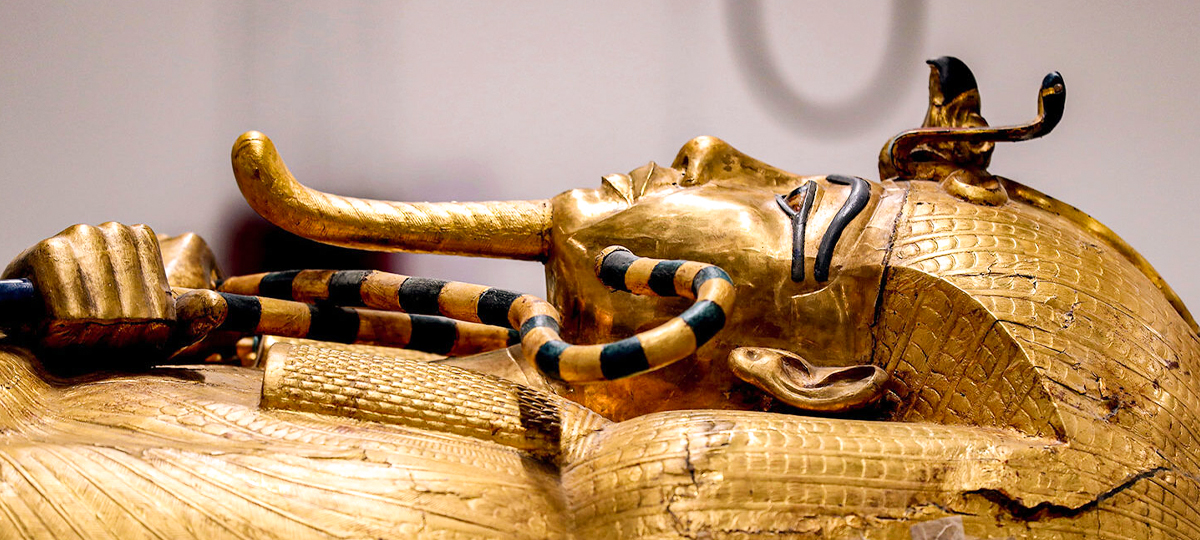
- Immersive Experience Inside Tomb of Tutankhamun, Prepare to enter a realm of wonder and discovery as we embark on an immersive journey inside the hallowed chambers of Tomb of Tutankhamun. As you cross the threshold, you’ll be enveloped by a mystery and reverence from ancient times. The air is thick with stories whispered by the walls, and every step you take transports you further into the heart of a pharaoh’s resting place. The meticulous restoration efforts have preserved the essence of the past, inviting you to become a part of the narrative that has unfolded over millennia.
- Examining the Treasures and Artifacts Found Within the Burial Chamber,
- A treasure trove of unparalleled splendor awaits your gaze within the confines of Tutankhamun’s burial chamber. Each artifact, meticulously crafted by the hands of artisans long gone, offers a tantalizing glimpse into a world of luxury and devotion. From intricately detailed jewelry that adorned the young pharaoh to gilded chariots that once raced through the desert sands, the chamber is a testament to the creative prowess of an ancient civilization. The meticulous attention to detail, the exquisite materials, and the symbolism woven into every piece paint a vivid tableau of a society deeply rooted in spirituality and the pursuit of the divine.
- Significance of Each Artifact and Its Role in the Afterlife, As you scrutinize these treasures, you’ll uncover a narrative that transcends time, a story of beliefs and aspirations that guided the ancient Egyptians on their journey to the afterlife. The significance of each artifact is intertwined with a complex web of symbolism and ritualistic meaning. The funerary masks, such as the iconic golden mask that graced Tutankhamun’s mummy, served as protective coverings and conduits for the soul’s transformation. Shrouded in mystical significance, elaborate amulets were believed to offer guidance and protection in the world beyond. Every detail, every stroke of the chisel, held a purpose far beyond the aesthetics, affirming the unbreakable bond between the mortal realm and the divine.
Please read our article about How To Book Nile Cruise
Unraveling the Legends and Myths
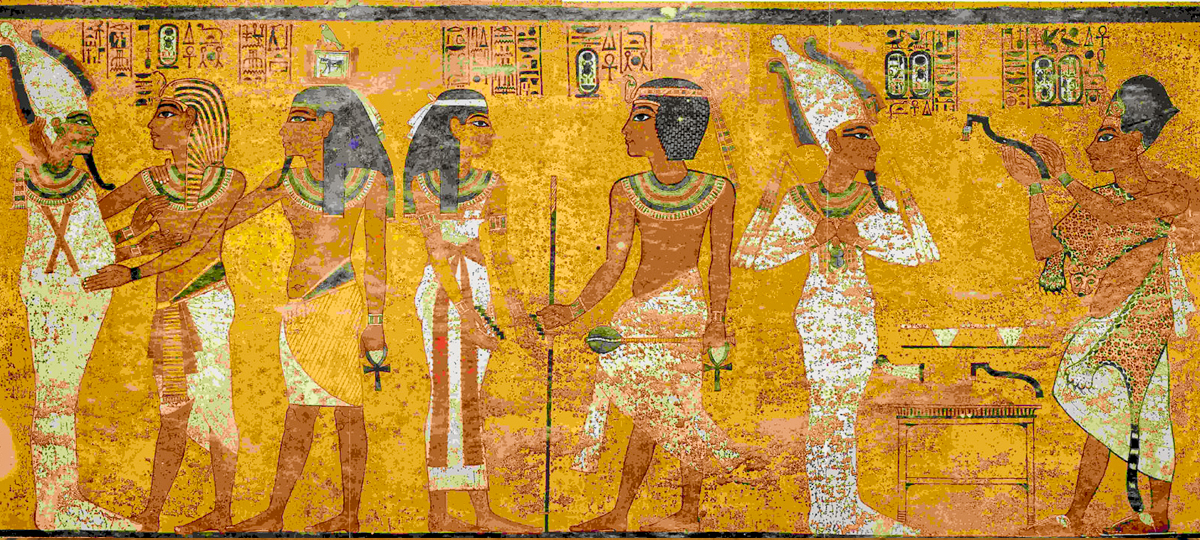
- Debunking Common Myths and Misconceptions Step into the realm of historical accuracy as we embark on a journey to debunk common myths and misconceptions that shroud the legacy of Tomb of Tutankhamun. Amidst the allure of ancient Egypt, many stories have woven themselves into the fabric of popular imagination, often blurring the lines between reality and fiction. From fantastical tales of treasure-laden curses to exaggerated narratives of grandeur, we peel back the layers to reveal the truths beneath the surface. Prepare to witness history come alive as we unravel the lingering myths for centuries, paving the way for a clearer understanding of Tutankhamun’s enigmatic existence.
- Separating Fact from Fiction: Tutankhamun’s Cause of Death, Delve into the realm of scientific inquiry as we endeavor to separate fact from fiction regarding Tutankhamun’s untimely demise. Speculation has abounded regarding the cause of his death, ranging from accidents to foul play. With modern technology and meticulous analysis, experts have pieced together a more accurate picture of the young pharaoh’s final moments. Join us as we navigate the medical evidence, unveiling the insights gleaned from the remains themselves. The truth behind Tutankhamun’s passing is a testament to the resilience of historical investigation, demonstrating how the interplay between science and archaeology can illuminate even the darkest corners of antiquity.
- Unveiling the Curse of the Pharaohs: Exploring Its Origins and Impact, Embark on a voyage into the mystique of the curse of the pharaohs. This legend has captivated imaginations and sent shivers down spines for generations. The tales of misfortune that befell those who dared disturb Tutankhamun’s resting place have become the stuff of legend, captivating the curious and the cautious alike. But what are the origins of this haunting narrative, and is there any truth to the curse’s purported power? Join us as we peel back the layers of time to explore the genesis of the curse and the historical context that gave rise to its infamy. Through an objective lens, we analyze the purported impact of the curse, shedding light on the intricate interplay between coincidence, superstition, and the relentless march of time.
Don’t miss Reading Best Lake Nasser Cruise
Practical Tips for Exploring the Tomb

Dress Code and Attire for Tomb of Tutankhamun Visit
Embarking on a journey to Tomb of Tutankhamun demands careful consideration of appropriate dress code and attire. While Egypt’s climate may tempt you to opt for light and casual clothing, it’s essential to balance comfort and cultural sensitivity. Choose lightweight, breathable fabrics that offer protection from the sun, and opt for modest clothing that covers shoulders and knees. This demonstrates respect for the sacredness of the site and the local customs. Comfortable walking shoes are a must, as you’ll traverse uneven terrain. Remember, your attire not only contributes to your comfort but also reflects your reverence for the historical significance of the tomb.
Photography Rules and Guidelines
Capturing the mesmerizing beauty of Tomb of Tutankhamun through photography is tempting, but it comes with its own rules and guidelines. While the urge to document your experience is natural, it’s essential to be mindful of the delicate nature of the artifacts and the need to preserve Tomb of Tutankhamun for future generations. Flash photography is often prohibited, as intense light can cause irreversible damage to delicate pigments and materials. Some sites may have a complete photography ban, so it’s advisable to check with your guides beforehand. Embrace the opportunity to absorb the sights without the lens, allowing your senses to engage with the historical richness that envelops you fully.
Read our article about the Tipping on Nile Cruises
Dos and Don’ts to Ensure a Respectful and Responsible Visit
As you step into the tomb’s hallowed halls, there are a few dos and don’ts to keep in mind, ensuring a visit that is both respectful and responsible. Do heed the instructions of your guides, who are well-versed in preserving the site’s sanctity. Respectfully follow any signage or restrictions, refraining from touching artifacts, leaning on walls, or engaging in behavior that could cause harm. While the desire to leave your mark may be strong, remember that the best way to honor the Tomb of Tutankhamun’s legacy is by leaving no physical trace. Engage with the history and significance of the site through attentive observation and mindful contemplation. And, of course, carry a sense of curiosity and awe, allowing yourself to be swept away by the moment’s magic.
Read our article about the Requirements for traveling to Egypt.
Preserving the Legacy: Responsible Tourism

The Importance of Sustainable and Responsible Tourism
Embarking on a journey to explore the wonders of Tomb of Tutankhamun and the treasures of ancient Egypt carries a responsibility that extends beyond personal enrichment. Sustainable and responsible tourism lies at the heart of preserving the legacy of these iconic sites for generations to come. By adopting mindful travel practices, we can ensure that our presence positively impacts the environment, culture, and heritage we encounter. As visitors, we play a crucial role in safeguarding the treasures that have withstood the test of time, allowing them to continue enchanting the world long into the future.
Supporting Conservation Efforts for the Preservation of Ancient Sites
Preservation is a collective endeavor that requires the concerted efforts of travelers, locals, and authorities alike. By actively supporting conservation initiatives, we become custodians of the past, contributing to the ongoing maintenance and restoration of these invaluable sites. Financial contributions, whether through entrance fees or donations to reputable organizations, directly fund projects that protect and restore the integrity of historical landmarks. Additionally, staying informed about conservation challenges and advocating for sustainable policies ensures that the rich tapestry of history remains intact and vibrant.
Read our article about What to pack for Nile Cruise Trip?
Leaving a Positive Impact on the Local Community and Environment
The true essence of responsible tourism lies in the positive imprint we leave on the local community and the environment. Engaging with local businesses, artisans, and guides enhances your experience and fuels economic growth and empowerment within the community. As conscientious travelers, we can uplift livelihoods, celebrate cultural diversity, and foster a sense of pride among the residents who call these lands home. Moreover, our commitment to minimizing waste, conserving resources, and respecting the natural surroundings ensures that the pristine beauty of these ancient landscapes endures for generations, fostering a legacy of sustainability that mirrors the very essence of the sites we explore.
Check out this article for more information on Nile Cruise Food
Conclusion about Tomb of Tutankhamun
As we conclude our incredible exploration of Tomb of Tutankhamun, it’s hard not to be awestruck. We’re in awe of the ancient walls’ treasures after our fascinating journey through history. After this fantastic journey, we’re in the marvel of the ancients’ ingenuity and craftsmanship. It’s as if their lives and aspirations echo through time and touch us today.
We invite fellow travelers to join us on this enriching journey. Exploring Tomb of Tutankhamun is like traveling through human history. Stepping into those hallowed chambers, surrounded by artifacts from a bygone era, can transform us and deepen our understanding of the past. It’s a reminder that ancient civilizations’ stories are not dusty textbooks but vibrant narratives waiting to be discovered.
As we say goodbye, we embrace Tomb of Tutankhamun lasting impact on Egypt’s rich heritage. The young pharaoh’s burial site symbolizes Egypt’s cultural tapestry. It shows a civilization’s resilience. Embracing this legacy ensures that future generations can marvel at Tomb of Tutankhamun wonders.

